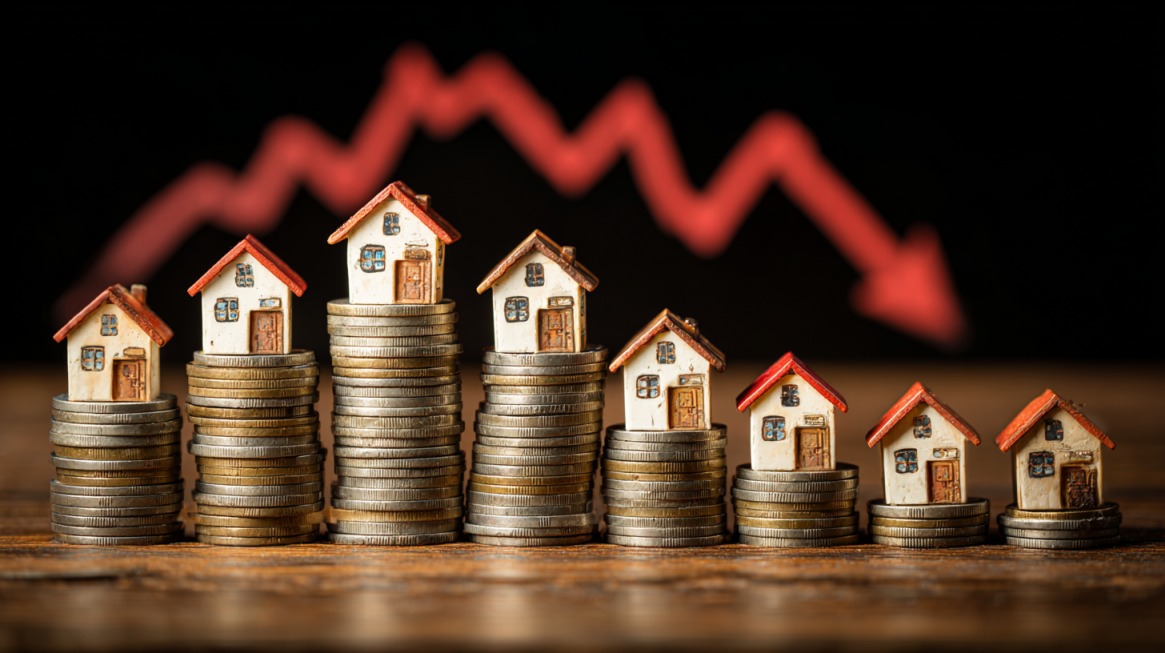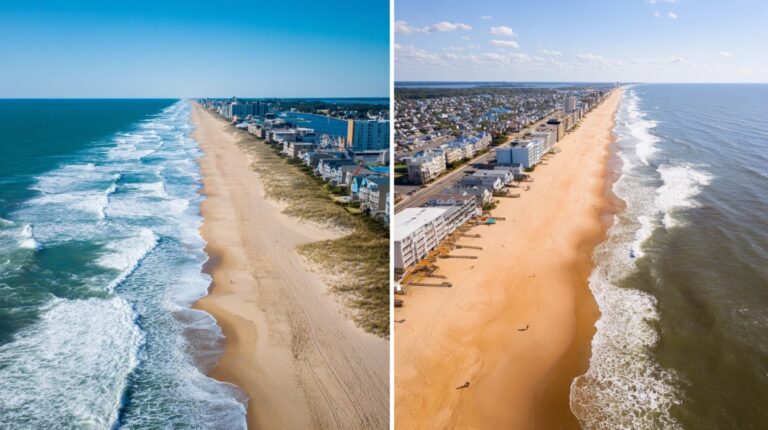East Coast homeowners in 2025 face one of the most important decisions of the decade: sell now or wait for further price increases. Market data paints a mixed picture.
Nationally, the median listing price sits around $425,990 in August 2025, reflecting a small 1% month-over-month decrease.
Homes spend about 62 days on the market, slightly longer than before, signaling growing caution among buyers.
Interest rates, however, provide a spark of optimism. Fifteen-year mortgage averages have dipped to 5.50%, a notable improvement after the high-rate environment of 2023.
Lower borrowing costs are reawakening activity across many East Coast markets, fueling both buyer confidence and competition.
For homeowners considering selling, timing may be critical as balance slowly returns to the housing sector.
Table of Contents
Toggle2025 Market Overview
Policy shifts and economic movements are reshaping the housing sector across the United States.
President Trump’s second-term initiatives have driven zoning reform, infrastructure expansion, and broader access to federal lands, all of which influence development momentum.
In New York City, the “City of Yes” initiative encourages commercial-to-residential conversions, creating new housing opportunities in districts once dominated by office buildings.
Across multiple states such as New York, Arizona, and Texas, Accessory Dwelling Units (ADUs) have gained wider acceptance, empowering homeowners to turn portions of their properties into income-generating spaces.
Mortgage rates reveal a gradual return to equilibrium.
After peaking near 7% in 2023, the average 15-year fixed mortgage has settled at 5.50%.
Forecasts for late 2025 suggest a modest adjustment toward 5.57%.
Such stability prevents overheating while keeping homeownership within reach for qualified buyers.

- Declining interest rates supporting mid-range affordability.
- Government-driven infrastructure projects enhancing property values.
- Zoning flexibility enabling mixed-use and residential conversions.
- Investor interest sustained through regulatory predictability.
Steady lending conditions and local policy reform are forming a balanced East Coast housing environment, giving both sellers and buyers a chance to act strategically instead of impulsively.
Where the East Coast Stands: Region-Specific Analysis
Regional performance along the East Coast varies but remains stronger than the national average.
Data by Construction Coverage places Connecticut at the top with a score of 91.0, trailed by New Jersey at 87.8, Massachusetts at 85.7, Rhode Island at 84.5, and New York at 71.4.
- Percentage of homes sold above asking price.
- Median days on market.
- Sale-to-list price ratio.
- Frequency of price reductions.
Smaller and midsize cities are showing increased competitiveness.
Union City, New Jersey, leads with a small-city score of 94.3, while Buffalo, New York, achieves 82.8.
Newark’s midsize city performance holds steady at 79.5, and Boston continues to show steady resilience with a score of 64.4. Movoto.com market trend data shows that demand in and around Boston remains consistent despite affordability pressures.
@itsmejasonoppenheim Real Estate Realness Part 1: Tips for Buyers. I get asked a lot of questions about my best #realestatetips ♬ original sound – Jason Oppenheim
- Connecticut attracts professionals prioritizing job stability and suburban space.
- Massachusetts benefits from thriving education and technology sectors.
- New Jersey retains value through its proximity to major metropolitan hubs.
Local housing supply remains constrained, ensuring that competitively priced listings attract attention quickly and rarely stay unsold for long.
Is Now the Time to List?
Sellers in 2025 navigate an environment filled with both opportunity and caution.
Home prices have increased 6.3% year-over-year since December 2024, showing ongoing strength.
Inventory levels, however, have jumped nearly 29% since mid-2024, indicating more competition among sellers.
Despite this rise, key Northeast metros still face limited stock and consistent buyer enthusiasm, particularly in areas close to employment and transit centers.

- One in five sellers now reduces asking prices to stay competitive.
- National average days on market remain at 62.
- Foreclosure filings have grown by 5.8% compared to early 2024.
- Such shifts underline the need for a measured approach. Sellers who act methodically often achieve better results than those chasing unrealistic valuations.
Recommended Actions for Sellers:
- Establish pricing that aligns with verified local comparables.
- Collaborate with local agents aware of tax exemptions and incentive programs.
- Prepare properties thoroughly to ensure smooth inspections. It includes enhancing curb appeal through services like exterior cleaning services Newport News.
- Market homes using data-backed pricing strategies that target qualified buyers.
Precision and patience remain essential to achieving favorable outcomes in a competitive yet steady marketplace.
Who’s Driving Demand?

Buyer behavior in 2025 reflects both resilience and adaptation.
Around 31% of homes sold above asking price in June, showing that motivated buyers are still competing for well-positioned listings.
Urban centers such as Boston, Washington, D.C., and New York are witnessing the return of professionals seeking proximity to offices and cultural amenities after several years of remote flexibility.
Affordability remains a pressing factor. Many first-time buyers are shifting toward smaller homes, ADUs, or converted properties to balance lifestyle and budget.
Investors are continuing to prioritize multi-family properties for long-term rental income and portfolio stability.
- Compact, efficiently designed homes near essential services.
- Access to public transit and newly upgraded infrastructure.
- Ability to generate rental income through secondary units.
Emphasis is moving away from luxury finishes toward functionality, sustainability, and long-term affordability.
Buyers aim for security rather than speculation, reinforcing steady demand patterns throughout the East Coast corridor.
Will Prices Keep Rising?

Price growth remains steady but not explosive.
National home sale prices are 6.3% higher compared to late 2024, and sales volume climbed nearly 11% year-over-year.
Analysts predict sustained appreciation of around 3–6% annually through the remainder of 2025, indicating a normalization phase rather than a speculative boom.
Forecasts suggest that no significant downturn is imminent.
Several structural elements continue to support East Coast strength, limited housing supply, consistent job creation, and persistent demand for urban proximity.
Coastal states benefit from strong employment sectors in technology, healthcare, and finance, which help maintain property stability.
Investors and homeowners should anticipate gradual value increases rather than sharp surges.
Balanced pricing, moderate borrowing costs, and structural constraints make the East Coast one of the most reliable regions for long-term real estate growth.
Final Thoughts
East Coast real estate remains resilient in 2025.
Although the national market shows signs of cooling, core metro areas continue to experience sustained demand and modest appreciation.
Homeowners who price accurately and act strategically can still secure favorable outcomes before the next rate cycle shifts conditions again.
Strong employment centers, limited inventory, and demographic trends all point toward continued growth, especially in high-demand cities like Boston, New York, and Newark.







